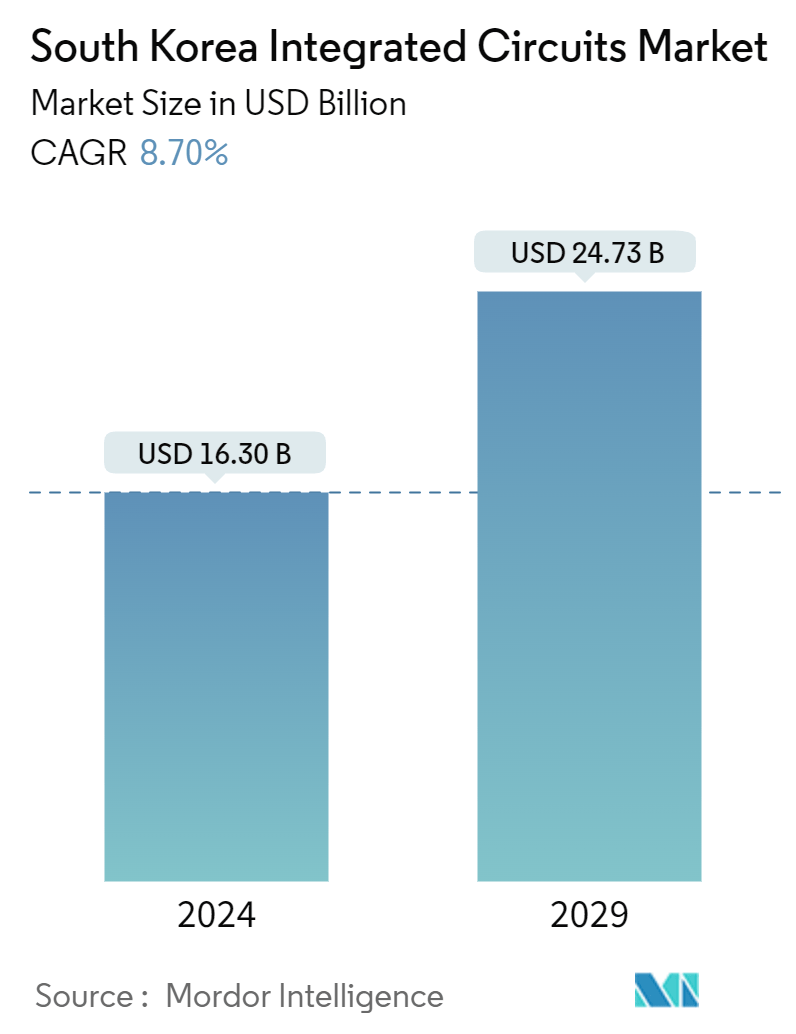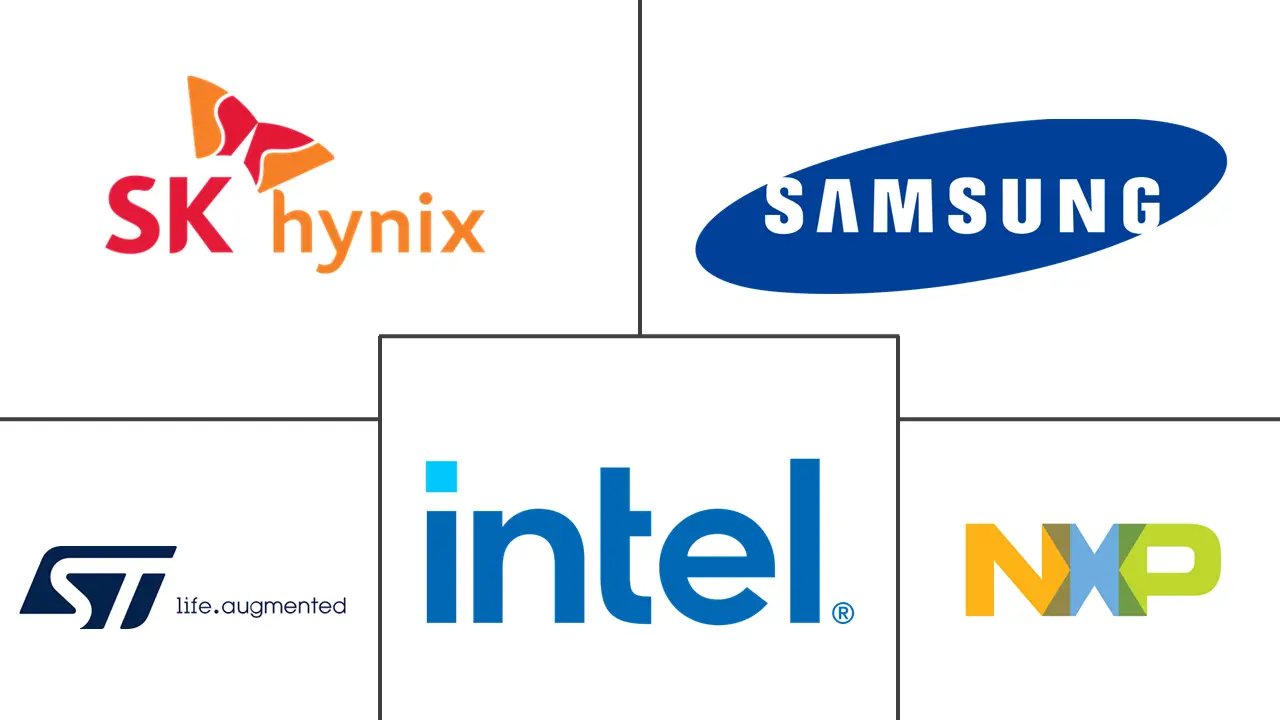Market Size of South Korea Integrated Circuits Industry

| Study Period | 2019 - 2029 |
| Base Year For Estimation | 2023 |
| Market Size (2024) | USD 16.30 Billion |
| Market Size (2029) | USD 24.73 Billion |
| CAGR (2024 - 2029) | 8.70 % |
| Market Concentration | Low |
Major Players
*Disclaimer: Major Players sorted in no particular order |
South Korea Integrated Circuits Market Analysis
The South Korea Integrated Circuits Market size is estimated at USD 16.30 billion in 2024, and is expected to reach USD 24.73 billion by 2029, growing at a CAGR of 8.70% during the forecast period (2024-2029).
- An integrated circuit (IC), often referred to as a microchip, is a compact electronic device that combines multiple interconnected components, such as resistors, transistors, and capacitors, onto a singular piece of semiconductor material, typically silicon.
- One of the most significant advantages of integrated circuits is their ability to miniaturize electronic components. Traditional circuits, composed of discrete components, take up considerable space, making devices bulky and less portable. ICs, on the other hand, integrate numerous components into a tiny chip, allowing for the development of compact devices like smartphones, laptops, and wearables. This miniaturization is crucial in modern consumer electronics, where space is limited, and portability is paramount.
- Integrated circuits offer superior performance compared to traditional circuits. The proximity of components within an IC reduces the distance that electrical signals must travel, resulting in faster switching speeds and improved signal integrity. This enhanced performance is crucial in applications requiring high-speed processing, such as computers and telecommunications. Furthermore, ICs can operate at lower voltages, leading to a decrease in heat generation and power consumption, which is vital for energy-efficient devices.
- With advancements in technology, the demand for smaller, faster, and more efficient ICs has surged in South Korea. Innovations such as Moore's Law, which predicts the doubling of transistors on a chip approximately every two years, have propelled the development of more powerful ICs. Emerging technologies like quantum computing, machine learning, and artificial intelligence are creating new opportunities for IC design and manufacturing. Furthermore, advancements in fabrication techniques, such as FinFETand 3D IC technology, are enhancing performance while reducing power consumption.
- South Korea is one of the largest manufacturers of semiconductors globally. Semiconductor production is a crucial sector of South Korea's economy. The industry is expected to benefit from trends like increased focus on artificial intelligence and continued support from the South Korean government.
- The ongoing investments in new fabrication facilities (fabs) and expanding existing ones in South Korea aid the growth of the market. For instance, in November 2023, South Korea secured investments totaling USD 1.1 billion from US companies. The South Korean government announced that GM, DuPont, IMC, and Ecolab had committed to investing in the country.
- With the increasing demand for faster and more compact electronic devices, there is a rising requirement for advanced semiconductor devices. According to Samsung Electronics, in 2023, the company manufactured approximately 1.9 trillion semiconductor units globally. As one of the major companies in South Korea, Samsung Electronics was a crucial manufacturer in the global market for a range of electronic products.
- Several investments are being observed in terms of semiconductor fabrication in South Korea. In 2024, the South Korean government announced that it intends to increase the budget for the semiconductor industry to KRW 1.3 trillion (equivalent to approximately USD 1 billion). It would focus on enhancing infrastructure, investment environments, ecosystems, and advanced semiconductor technologies. Moreover, SK Hynix is scheduled to invest USD 90 billion in building the world's largest mega fab complex in South Korea, with plans for completion by 2046.
- On the other hand, the high cost of research and development is a significant barrier to the growth of the market. Developing advanced ICs requires substantial investment in technology and skilled personnel, which can be prohibitive, particularly for smaller companies.
- Further, high inflation can significantly impact the IC market by raising production costs. Higher prices for raw materials, components, and labor can lead to increased manufacturing expenses, which may be passed on to consumers through higher product prices. This can dampen demand, particularly in price-sensitive segments. Additionally, inflation can strain consumer purchasing power, leading to reduced investment in advanced technologies. According to the International Monetary Fund, in 2023, the average inflation rate in South Korea amounted to nearly 3.59% compared to the previous year.

